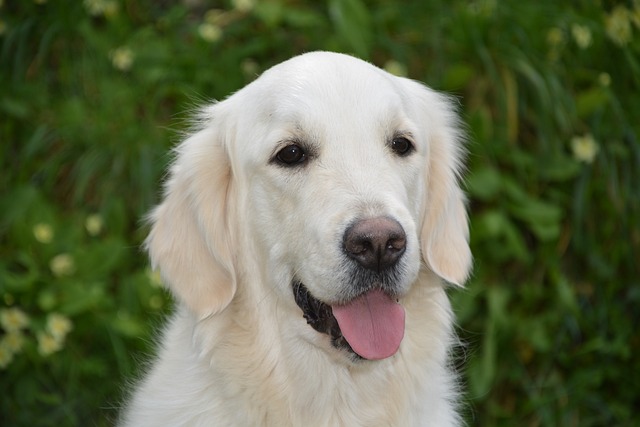
What is glaucoma in a dog?
You might notice your dog squinting more at mealtime or avoiding bright sunlight—these small changes could be early signs of a serious eye condition.
How to get dead flaky skin off a dog? If you’ve ever buried your face in your golden retriever “Max’s” fur for a cuddle, only to pull back with tiny white flakes clinging to your sweater—like dandruff, but bigger—you’re not alone. Maybe he’s been scratching more lately, or you’ve noticed dry patches on his back. It’s easy to panic, but flaky skin is usually fixable with a little know-how. Let’s break down why it happens and how to gently brush those flakes away.
First, let’s talk about what’s normal. A dog’s skin, like ours, sheds old cells naturally—those are the tiny flakes you see. But when there’s too much, it’s often a sign the skin’s protective barrier is off. Dry air is a big culprit: in winter, heaters in Chicago apartments suck moisture out of the air, leaving skin parched. In Arizona’s summer, AC does the same. Over-bathing can also strip away the skin’s natural oils—the waxy layer that keeps moisture in—making flakes worse. Even diet plays a role: dogs low on omega-3s (think fish oil) often have drier skin, since those fats help keep skin supple. It’s not about being “unhealthy”—just a sign their skin needs a little support.
So, how to get rid of those flakes? Start with brushing—seriously, it’s magic. Use a rubber curry comb or a soft bristle brush (avoid metal combs with sharp teeth, which can irritate). Gently glide it over Max’s coat, following the direction his fur grows. Brushing lifts dead skin and loose fur before it ends up on your couch, and it spreads his natural oils across his skin—like a built-in moisturizer. My friend in Boston does this with her husky “Luna” twice a week; after a month, the flakes vanished, and Luna leans into the brush now, tail wagging.

Next, check your bathing routine. If you’re lathering Max up every week, that’s probably too much—aim for once every 3-4 weeks, unless he rolls in something stinky. Use a mild, dog-specific shampoo (human shampoo is too harsh, like using dish soap on your face). After bathing, pat him dry instead of rubbing—rough towels can irritate dry skin. For extra moisture, add a splash of colloidal oatmeal to his bath water (it calms itchiness) or try a leave-in conditioner made for dogs.
Diet matters, too. Sprinkle a little fish oil (vet-recommended, not the stuff from your pantry) over his food—omega-3s help skin hold onto moisture. Max’s owner in Texas swears by this; after adding it to his kibble, his flaky patches smoothed out in two weeks.
Now, let’s tie this to being a responsible pet owner. First, the basics: all U.S. states require rabies vaccines by 4 months old, with fines up to $500 in Los Angeles for skipping them. Healthy skin starts with a healthy dog, so stay on schedule. When walking, always carry poop bags—failing to clean up in Seattle can cost $250, and a flaky dog shed more, so keeping shared spaces tidy matters.
For apartment dwellers, grab a humidifier. Dry air from heaters or AC is a top flake culprit—run it near Max’s bed, especially in winter. When grooming, turn it into a positive session: offer a treat after brushing, so he associates it with good things. Never scold if he squirms—patience beats force, and stressed dogs scratch more, making flakes worse.
At the dog park, if Max is flaky, keep play gentle. Overly rough tumbles can rub off dry patches, so give other dogs space. And if flakes stick around, or if his skin looks red or raw? Check with your vet—sometimes it’s a sign of allergies, not just dryness.
With a little brushing, a tweak to bath time, and some extra moisture, those flakes will fade. And when you cuddle Max again, your sweater stays flake-free? That’s the sweet reward—for both of you.

You might notice your dog squinting more at mealtime or avoiding bright sunlight—these small changes could be early signs of a serious eye condition.

Let’s set the scene: It’s a sweltering Phoenix afternoon—105°F outside—and you rushed your 2-year-old Lab mix, Cooper, on a quick walk to “get it over with.”

Let’s get real: You’re in your Miami apartment, watching your 3-year-old Corgi, Loki, struggle to climb the stairs to your second-floor unit.

Many dog owners brush off occasional scratching as just “dog behavior,” but persistent itching often signals something more—like a food allergy.

You might first notice your dog scratching more than usual—chewing at their paws until the fur looks thin, or rubbing their face against the couch nonstop.

Let’s be real: You’re standing in your Chicago apartment, watching your 3-year-old Beagle, Max, huff and puff just to climb onto the couch.